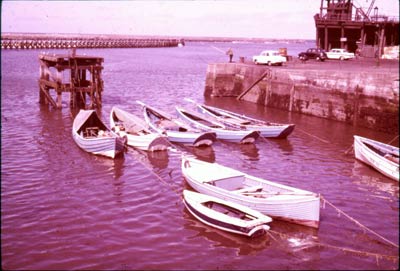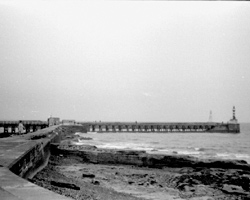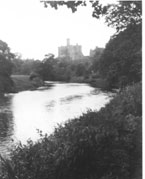
AMBLE TO FELTON

"The best time to see the (Amble) harbour is in a howling north-east gale. If you walk out on the wooden extension of the south breakwater (if you can do so without being washed away) you not only have the experience of seeing huge waves break around you - but under your feet too. And you see the waves hurling themselves against the North Breakwater and overtopping it and surging down like great waterfalls - the smoke that thunders! Outside, north of Coquet Island, is a hell of breaking water, for there are reefs out there and the great waves are feeling the bottom."
The Companion Guide To The Coast Of North East England. John Seymour. 1974.
The Coquet enters the North Sea at the port of Amble, a small town and once a busy coal and fishing port. The coal staiths have long gone and the number of fishing boats and cobles is much reduced, but Amble is still popular with day trippers, caravanners and anglers and the Marina is home to many small boats. Its beaches and sand dunes are generally quiet and Coquet Island beckons from across the sea although it is not permitted to land there. The lighthouse, in common with others around our coast, is now unmanned and the island is a bird sanctuary.
The Coquet soon turns and flows north towards Warkworth, an attractive village built on a loop in the river and where the first crossing of the river occurs. Its medieval bridge was joined by a modern bridge in the 1960s and, further on, the Coquet flows through flat countryside, rich in agriculture and often wooded, passing under the East Coast Main Line railway just north of Acklington. It makes many changes of direction along the way before finally turning south from Guyzance with the nearby old bridge of Acklington Park until it reaches the small village of Felton.
- Warkworth New Bridge - 1965
- Warkworth Old Bridge - 1379
- Heather Leazes Footbridge - not known
- Acklington Park Bridge (Guyzance) - 1865
- Felton New Bridge - 1927
- Felton Old Bridge - 15th century?
- Felton A1 Bridge - 1981

